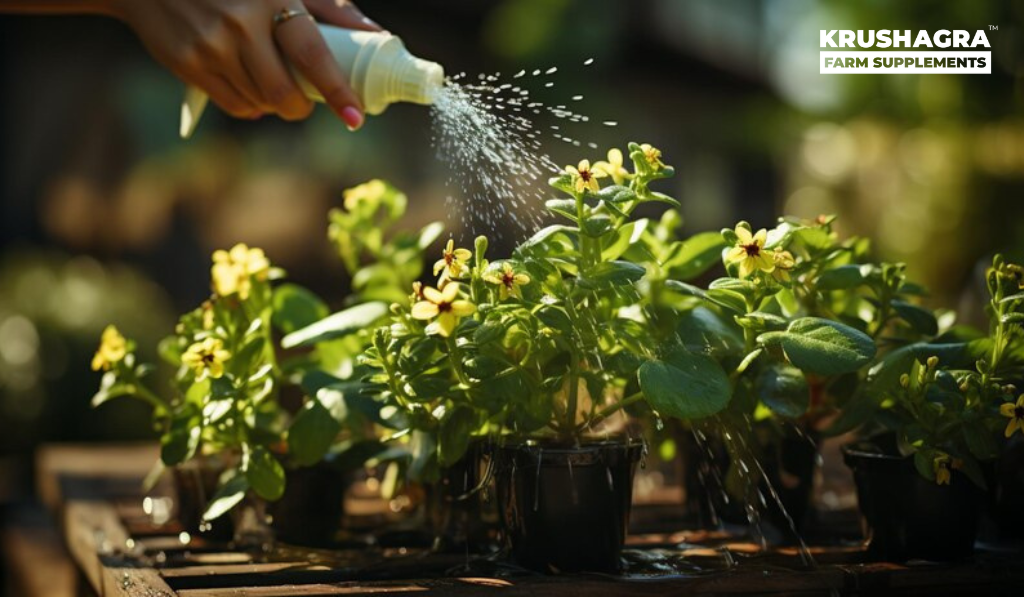Introduction:
In the ever-evolving world of agriculture, organic farming has emerged as a sustainable alternative to conventional methods. At the heart of this green revolution lies an unsung hero – bio-fertilizers. These living microorganisms work silently beneath the soil, fostering a harmonious relationship with plants. In this exploration, we will delve into the fascinating world of bio-fertilizers, uncovering their lesser-known roles and shedding light on the intricate dance they perform with nature.
Biofertilizers in Organic Farming:
Bio-fertilizers are like the invisible magicians of the soil, aiding in nutrient management and enhancing plant growth. Unlike chemical fertilizers, which are man-made concoctions, bio-fertilizers are natural substances containing beneficial microorganisms. The most common types of bio-fertilizers include nitrogen-fixing bacteria, phosphate solubilizing bacteria, and mycorrhizal fungi.
- Nitrogen-Fixing Bacteria:
Let’s start with nitrogen-fixing bacteria – the nitrogen whisperers. These tiny organisms possess the remarkable ability to convert atmospheric nitrogen into a form that plants can absorb. Nitrogen is a vital nutrient for plant growth, and these bacteria make it accessible to plants, creating a natural and sustainable nitrogen cycle.
Interestingly, these bacteria form a mutualistic relationship with certain plants, such as legumes (like peas and beans). In exchange for sugars produced by the plant through photosynthesis, the bacteria supply the plant with nitrogen. It’s a win-win collaboration that has been silently playing out in the soil for centuries.
- Phosphate Solubilizing Bacteria:
Moving on to phosphate solubilizing bacteria – the mineral liberators. Phosphorus is another essential nutrient for plants, but it’s often found in a form that plants cannot readily use. Enter phosphate solubilizing bacteria, which possess the ability to break down insoluble phosphates into a form that plants can absorb.
In the presence of these bacteria, the soil becomes a treasure trove of phosphorus, promoting healthy root development and overall plant vigor. This natural process ensures that plants get the phosphorus they need without the environmental drawbacks associated with chemical fertilizers.
- Mycorrhizal Fungi:
Now, let’s talk about mycorrhizal fungi – the silent communicators. These fungi form a symbiotic relationship with plant roots, creating a vast network that connects plants beneath the soil. Through this intricate web, plants can share nutrients, water, and even information.
Mycorrhizal fungi play a crucial role in enhancing the plant’s ability to absorb nutrients, especially phosphorus and micronutrients. In return, the fungi receive sugars from the plant. This underground communication system not only benefits individual plants but also contributes to the overall health and resilience of the entire ecosystem.
- Potassium- Mobilizing Bacteria:
Potassium is a key player in various plant functions, including water regulation, enzyme activation, and photosynthesis. Bio-fertilizers contribute to potassium availability through potassium-mobilizing bacteria. These bacteria solubilize potassium in the soil, making it easily absorbable for plants.
Interestingly, these bacteria are not just beneficial for potassium absorption; they also play a role in suppressing harmful pathogens. In the complex world beneath our feet, bio-fertilizers are not just nutrient providers but also defenders of plant health.
- Algae as Bio-Fertilizers:
While bacteria and fungi take center stage, let’s not forget the green champions of the aquatic world – algae. Algae-based bio-fertilizers bring a unique set of benefits to the organic farming stage. Algae contribute to soil fertility by fixing atmospheric nitrogen, much like nitrogen-fixing bacteria. Additionally, they enhance soil structure, moisture retention, and microbial activity.
Algae also provides a natural source of plant growth-promoting substances, such as auxins, cytokinins, and gibberellins. These substances act as growth hormones for plants, promoting cell division and elongation. In essence, algae bring a refreshing aquatic touch to the soil, fostering a diverse and thriving ecosystem.
Unveiling Lesser-Known Facts:
- Soil Structure Improvement:
Beyond nutrient enhancement, bio-fertilizers contribute to the improvement of soil structure. The activities of these microorganisms help create a crumbly, well-aerated soil texture that promotes water infiltration and root growth. This improvement in soil structure is a silent yet crucial aspect of sustainable agriculture.
- Disease Suppression:
Bio-fertilizers don’t just stop at nutrient facilitation; they also contribute to disease suppression. Some strains of beneficial bacteria and fungi produce compounds that inhibit the growth of harmful pathogens in the soil. It’s like having a natural defense system that protects plants from diseases without the need for chemical interventions.
- Drought Resistance:
In the face of climate change and unpredictable weather patterns, the role of bio-fertilizers in imparting drought resistance to plants is gaining attention. The improved root systems fostered by these microorganisms help plants access water more efficiently, making them more resilient during dry spells.
Organic Farming in India:
The future of organic farming in India holds great promise as the nation increasingly recognizes the importance of sustainable agricultural practices. With a growing awareness of the environmental and health benefits associated with organic farming, there is a palpable shift towards adopting chemical-free cultivation methods. Government initiatives promoting organic agriculture, coupled with the rising consumer demand for organic produce, are driving this transformation. Additionally, the emphasis on traditional farming practices, coupled with technological innovations, is paving the way for a more resilient and ecologically sound agricultural landscape in India. As the momentum for organic farming continues to build, the future envisions a scenario where farmers embrace these practices not only for economic viability but also for the long-term well-being of the soil, water, and overall ecosystem.
Conclusion:
In the quiet realms of the soil, bio-fertilizers are working tirelessly to sustain the delicate balance of nature. From nitrogen-fixing bacteria to phosphate solubilizing bacteria and mycorrhizal fungi, these microscopic allies play a pivotal role in the success of organic farming. As we embrace the green revolution, let’s not forget to appreciate the intricate dance of these unsung heroes beneath our feet, contributing to a healthier, more sustainable future for agriculture.





